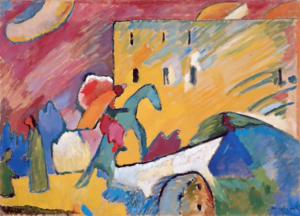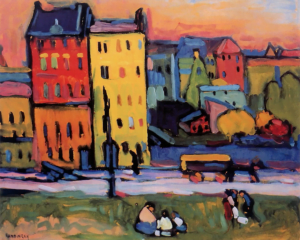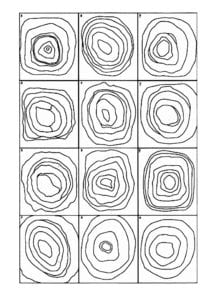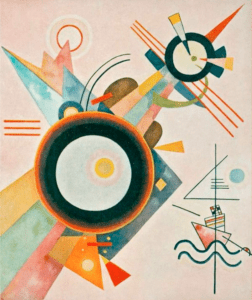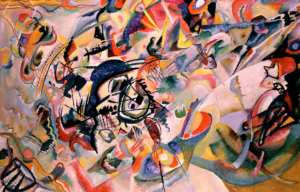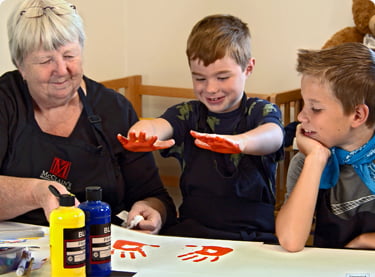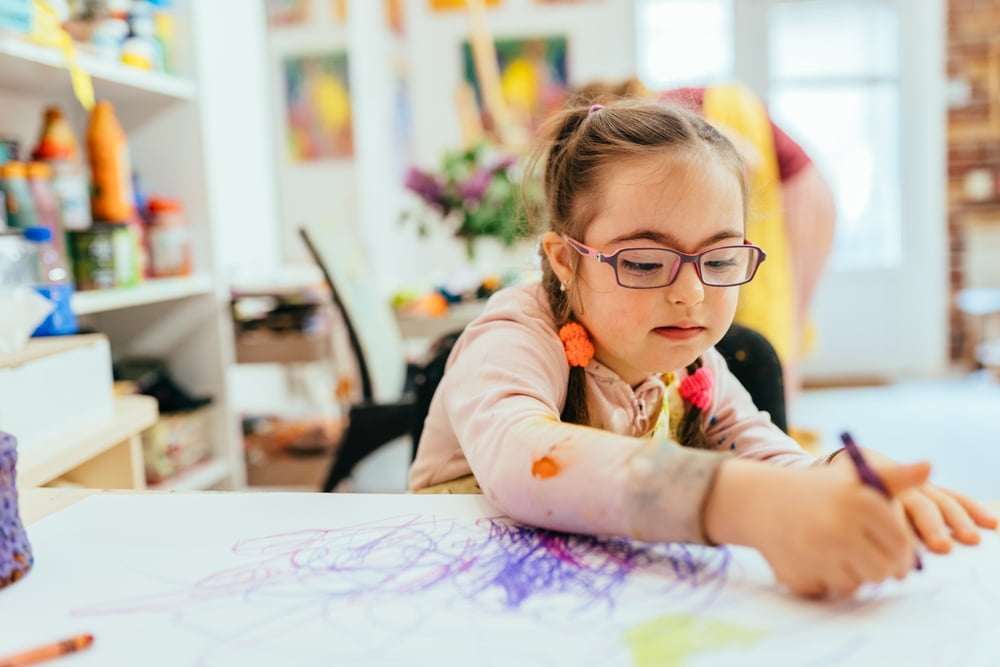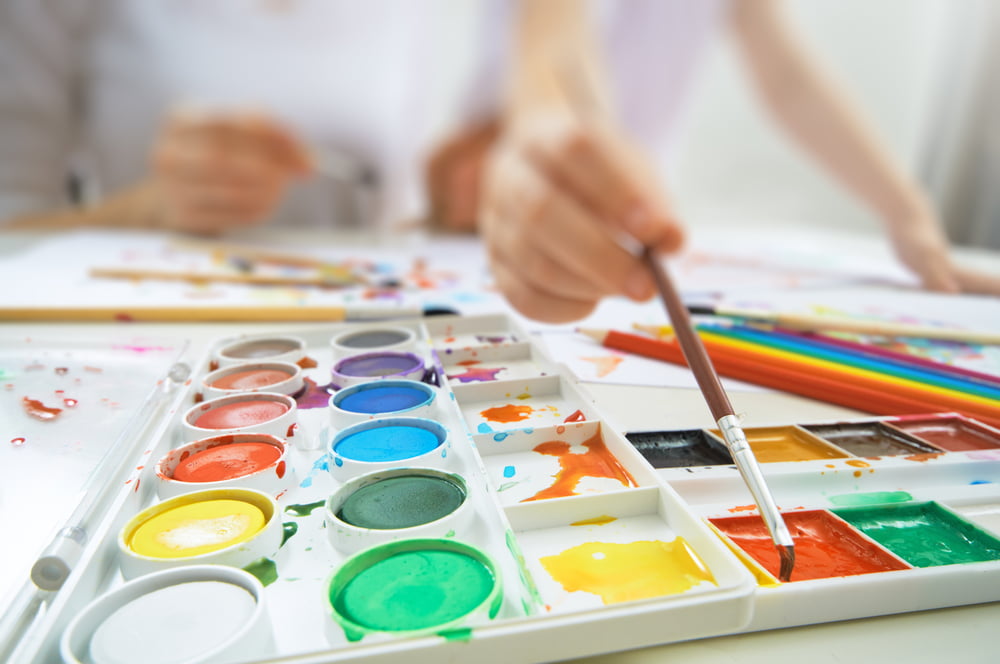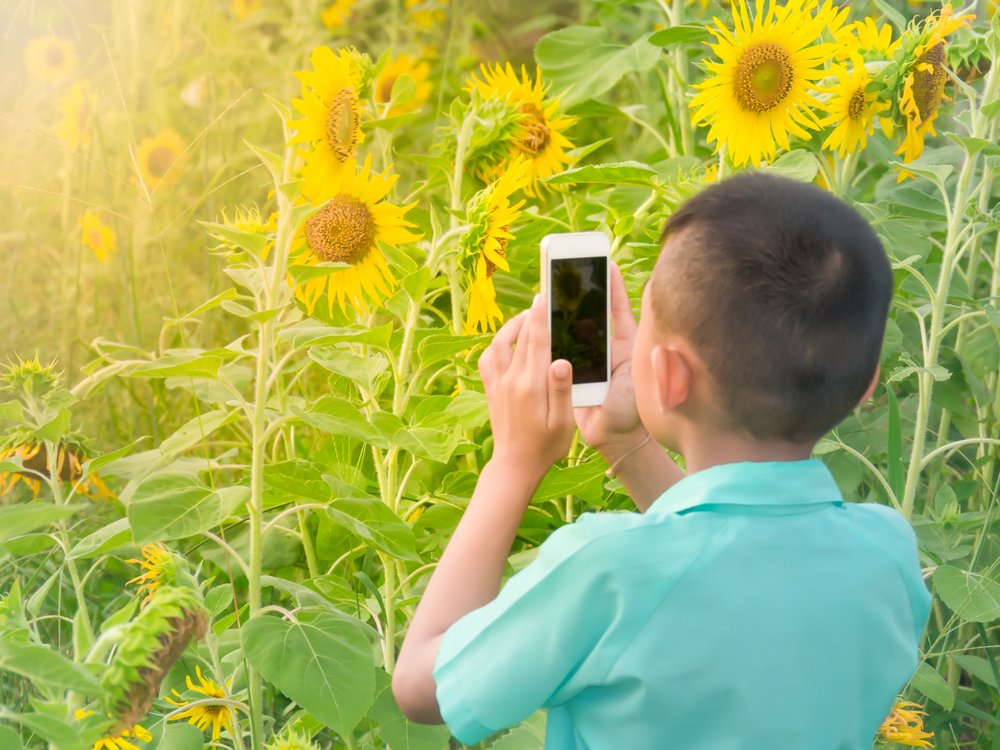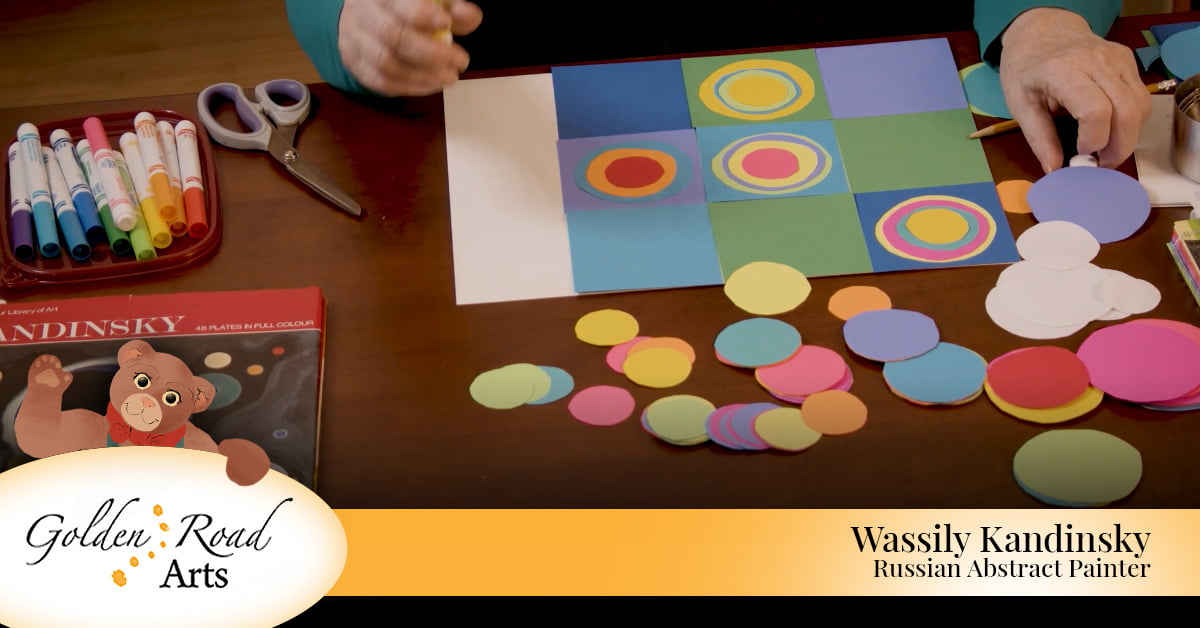
Art for kids can be both educational and fun, especially when exploring the works of Wassily Kandinsky. By creating art projects inspired by this abstract master, children can learn about color theory, shapes and composition in a hands-on and engaging way.
Wassily Kandinsky was a Russian abstract painter who lived from 1866-1944. In this lesson, we will create work similar to Kandinsky’s by using an assortment of colored paper and glue. If colored paper is not accessible to you, no worries, there is an alternative method you can use. Follow along for a fun art lesson!
Materials Required for Abstract Art Project
Materials that are needed for your abstract art project are colored paper (or white paper you have colored) and glue.
Learn About Wassily Kandinsky’s Life and Art Video
Barbara teaches about Russian abstract painter, Wassily Kandinsky as you learn how to create your own abstract art with circles.
Wassily Kandinsky and Creating Abstract Art
Read along with this video transcription as Barbara teaches us about Wassily Kandinsky and demonstrates how to create abstract art.
Golden Road Arts is a nonprofit that offers art classes for kids so they can make the most of their own creativity. At Golden Road Arts, we believe that children’s access to Art is the key to reaching their full potential. Using simple materials usually found around the house, we explore the basics of the creative process. Together with Barbara, her sidekick Artey bear and other Northwest artists, we invite you to join us on our creative adventure along the Golden Road.
Hi, this is Barbara Mason. Welcome to Golden Road Arts. We have got some interesting stuff to do today. You see, I’m still wearing my mask and Artey still has his mask on. But I’m going to take my mask off because it makes it a little easier to talk to you. We hope that pretty soon everybody will be vaccinated and then we won’t have to wear our masks quite so much anymore. I had my vaccine on Monday, and I feel just fine. So that was good, and It feels good to know that I’m not going to make anybody sick and that hopefully, I won’t get sick either.
So we’re going to talk to you today about an artist named Wassily Kandinsky. Mr. Kandinsky was born in Russia in 1866. So how long ago was 1866? Let’s see,1866 to 1966, 1966 is probably before any of your parents were born a long time ago. So it was over a hundred and fifty years, a really long time ago. So when Mr. Kandinsky went to school, he decided he was going to go into law. So he went to college to go into the law, and he got married, and then when he was 30, he suddenly decided that he didn’t want to go into the law. He wanted to do something else. He decided to become an artist. Now that was quite a decision at 30 years of age to become an artist. He changed everything that he planned to do. He decided to do that, and so he decided to leave Russia and move to Germany because he thought that there were better teachers in Germany.
And so, when he was a young man, he loved color. He said that one of the things that so struck him about color was he had gone into churches when he was quite little — maybe he was only five or six — and he said that the color was so amazing. He said he felt like he was walking in the middle of a painting. He said it just made such a difference to him to see these colors. It was such an emotional thing for him to be involved in the middle of all this color. That affected him for the rest of his life.
He very very very much liked color. So he went to Germany when he was about 30, and he did a lot of really, really interesting work while there. He was what we call an abstract artist. So abstract means that you take something down to its very smallest details – its finest detail. And so people would take something that looked like a boat or a house or a tree, and instead of making it look like a boat or a house or a tree, they would say, well how do I feel about this house? How do I feel about this boat? How can I show this? How can I show this and make people feel the same way I’m feeling? So sometimes they would just use a big splash of color.
Well, one of the things that Kandinsky did, he used a lot of circles. Circles were important to him. And so, in our lesson today, we’re going to talk about some of the circles that Kandinsky made. There are many ways to make circles. You can see here, I have a drawing that’s got lots of circles, one inside the other. And here’s one that I have already colored. And you can see, look at all those beautiful colors. Some of them are coming forward. Some of them are going back. So if you have a color that is light – yellow is kind of a light color, orange is kind of a light color – those colors tend to come forward, and especially if they’re warm colors, they tend to come forward. So cool colors tend to go away. So if you have a cool color next to a warm color, the warm color looks like it’s coming toward you, and the cool color looks like it’s going away. And here we’ve got it exactly the opposite. We have the warm color in the back and the cool color next to it. So this looks like it’s coming forward, and this looks like it’s going away. So it’s just a trick that your eye makes when it sees those colors. So Kandinsky just loved these colors. And so we’re going to work a little with these circles. And we’re also going to put this on the internet. So you’re going to be able to have this circle template, and you can color these any way you want.
I’m going to just start with orange here. And I’m using markers because crayons are beautiful, but they don’t have quite as intense a color as markers. One of the things about Kandinsky’s work is he really liked color, and the colors were real important to him. So when he first went to Germany to become an artist, he took lessons from a teacher, and the teacher wasn’t that great an artist, but he was really a good teacher. So some people just have a gift for teaching even if they aren’t so good at it. And you know art is a learned skill. Anybody can learn to do this. You just have to practice. And so Kandinsky spent quite a few years practicing and he got better and better and better. And that’s what happens with anything you do, if you do more of it you get better.
So you can see what I’m going to do here. I’m going to be able to color these and when I get done with it, I will have something that looks a little bit like this example. So we could also do this with colored paper which would be a lot of fun. So I bought this colored paper at Office Depot. See here how beautiful it is! And it was a big stack of all these different colors, it was about fourteen dollars. That’s quite a bit of money for paper. But if you could use it for other things maybe it would be worth it. So I did some templates out of paper to get the circles that I wanted, but I had to decide how I could make these so that I could make them round, and I thought what do I have that is round? What do I have that’s round that I could draw on to make these circles? I found these measuring cups and I thought “oh these are going to work.” So I took these measuring cups, and I just drew around them with my pencil like this.
And then I had the circle and then I just cut it out and then I laid it on the color paper, and I was able to draw these circles. But what if you didn’t have anything round that you could draw around? What if you just wanted to make a circle and you didn’t have anything to draw? So if you took a piece of paper and folded it in half like this. You can take your pencil and you could make a letter C, a big C here. The trick is you have to make it hit the side over here. So we’re making a big letter C. Just like that. And then if you took your scissors and you cut this out. It would be pretty close to a circle.
Let’s see how close we got. Let’s see how much It looks like a circle. It’s pretty good. It’s not perfect. We’ll just cut the little point off here that’s not perfect. Do the same on the other side. How does it look? It looks pretty good. So you see if you don’t have something that you can draw around, just fold a square in half and draw a letter C on it. Then you can make your circle.
So I’ve got all these squares here that I cut out. So we’re going to do something that’s a little bit like Kandinsky’s work. There we go. Okay, so we’re going to glue this on. And I have used the kind of cool colors for these. I’ve used the greens and blues, they’re kind of cool colors and they’re the colors that go away when you put a warm color on it. The warm color will come forward, your eye will trick yourself into thinking that color comes forward and that the dark color – the cool color – goes away. It’s just a trick. There’s a lot of tricks in art.
So this is a very fun thing to do to make all these circles and squares. So we’re making our colored squares here. It’s kind of like a patchwork quilt, isn’t it? Gluing and pasting is a lot of fun. Everybody likes to glue. And I really like glue sticks because they’re not very messy and they do a good job. So then we have to decide what colors we want to use for our circles. So again, I want to talk a little bit more about Kandinsky’s life. He moved away from Russia, and he moved to Germany. Okay, now we’re going to do yellow in the purple. So look at how that yellow comes forward. It almost vibrates. It’s so impressive and this is one of the things Kandinsky really loved about color. When he was young, he really liked folk art. Folk art is art that’s done by people that don’t really have any training, but they do a lot of nice work and they use a lot of color and he really liked the color.
Let’s put a blue one in there. Let’s see what happens. Whoo. Look at that. I need to go get another yellow one. So when you’re doing this, this is a lot of fun. You can choose any colors that you want. We’ve got a lot of choices here. When you can see these some of these are not quite round, but it doesn’t really matter. As long as they’re sort of round. We’re going to put the pictures of the piece that Kandinsky did on the internet, and you’ll be able to see that some of his stuff isn’t really round either. So this is coming forward because it’s bright and then look at that if we put the purple on it. What happens there? Is it going away?
Wow, look at that. These are so beautiful. These colors are so much fun to work with.
So now I’ve got a blue circle. So when you’re doing this, you’re gluing your circles on all these beautiful colors. You can see that I’m kind of going back and forth between the warm colors and the cool colors, but you can do it any way you want to because it’s your artwork. That is the nice thing about art — there’s not really any wrong way to do it.
Let’s put a red one in here. So we have red and pink, look at the difference here. See how much the pink looks like it’s going to jump out at you, the red kind of looks like it’s a little duller. It kind of looks like it’s going away. Pretty interesting with what happens with these colors. Because Kandinsky loved color, he worked with color all his life and he did do a lot of circles. He thought circles were very important and that they had an important kind of a life lesson. He saw them as things that just were important because of the fact that they completed. You know — when you go around a circle when you get to the end, you just completed your circle.
This is really fun. I hope that you’ll be able to do some circles too. We tried to have a color of the day to go with Kandinsky’s circles. But we decided that he loved many colors and used many colors in his work – beautiful colors. We’re going to put some of his work on the internet and you’ll be able to look at it to see these beautiful pieces he did. So Kandinsky lived until 1944 and he stayed in Germany until he moved to Paris. A lot of artists moved to Paris. He lived there for the rest of his life. As I said he died in 1944, so he had a pretty long life, and he did some really really interesting paintings. He used a lot of circles, but he also did squares and he started doing work that was very much what we call non-objective. That means if you looked at it you might feel something. You feel an emotion because you would see the work and it would make you feel a certain way. But it didn’t look like a tree. It didn’t look like a house. It didn’t look like your neighbor’s dog. It just looked like color and shapes and lines and they definitely made you feel something and that was what he wanted. He wanted you to see his work and react to it.
I hope that you will make some of these circles out of colored paper. If you don’t have all this pretty colored paper, take our template here, and print this off the internet. Or you could actually draw your own. You just have to draw circles inside some squares. You could make your own and then color them all different colors and you would have a beautiful Kandinsky piece of art.
So that’s the end of our lesson for today. So I’m going to put my mask back on because even though I had my vaccination. I don’t want to catch anything and I don’t want to make anybody else sick because we could still get it. Even if we have the vaccine. So we’re going to be very careful. So thanks for coming to see me today and I hope to see you again next time.
Discover Engaging Art Lessons for Kids of All Ages
Golden Road Arts offers free art lessons that introduce children to the world of art through accessible, entertaining content. Explore our library of video tutorials for art literacy and instructional guides created for elementary and middle school kids. To get started watch our free art lessons now, and consider supporting our mission with a donation.
Wassily Kandinsky Actually Painting
Samples


